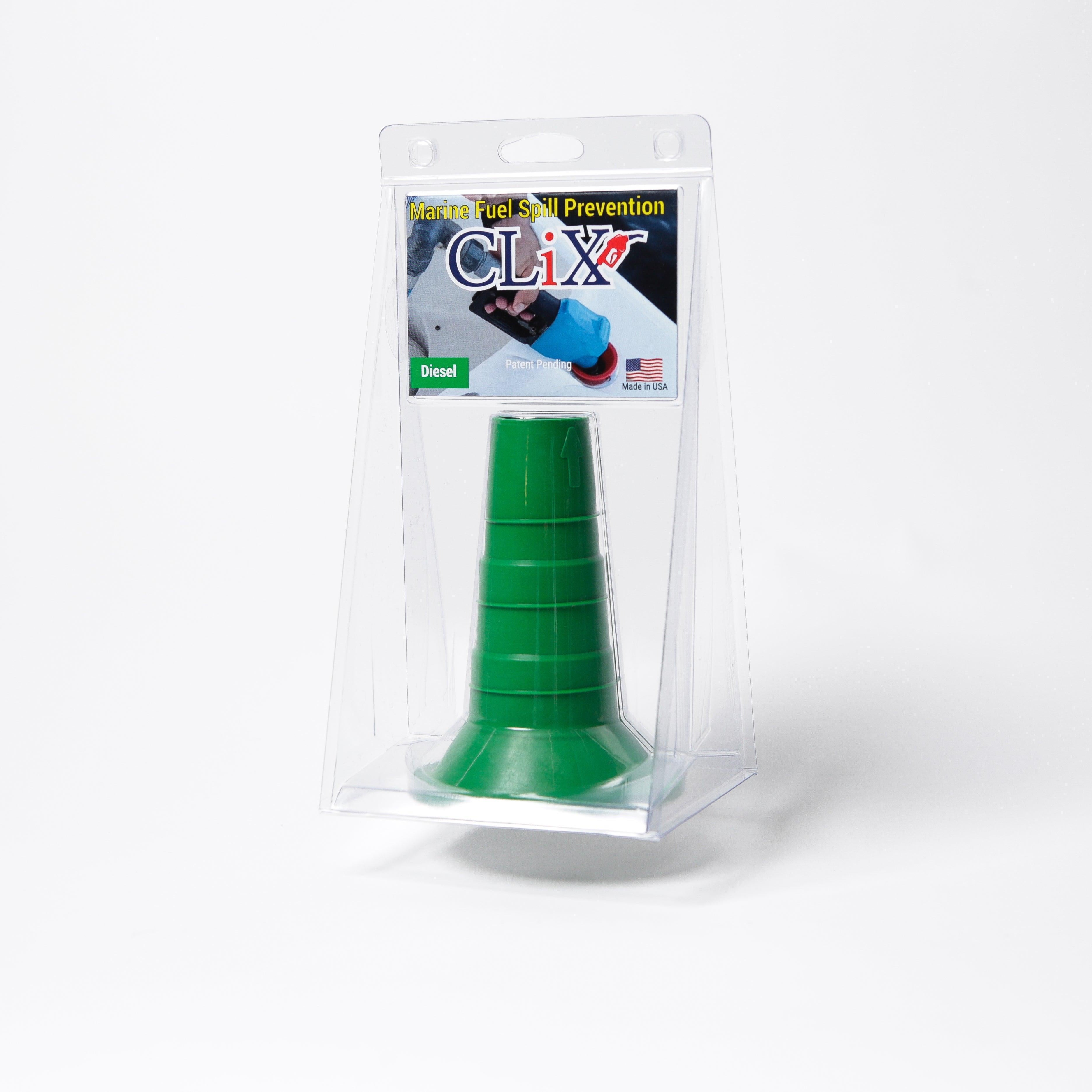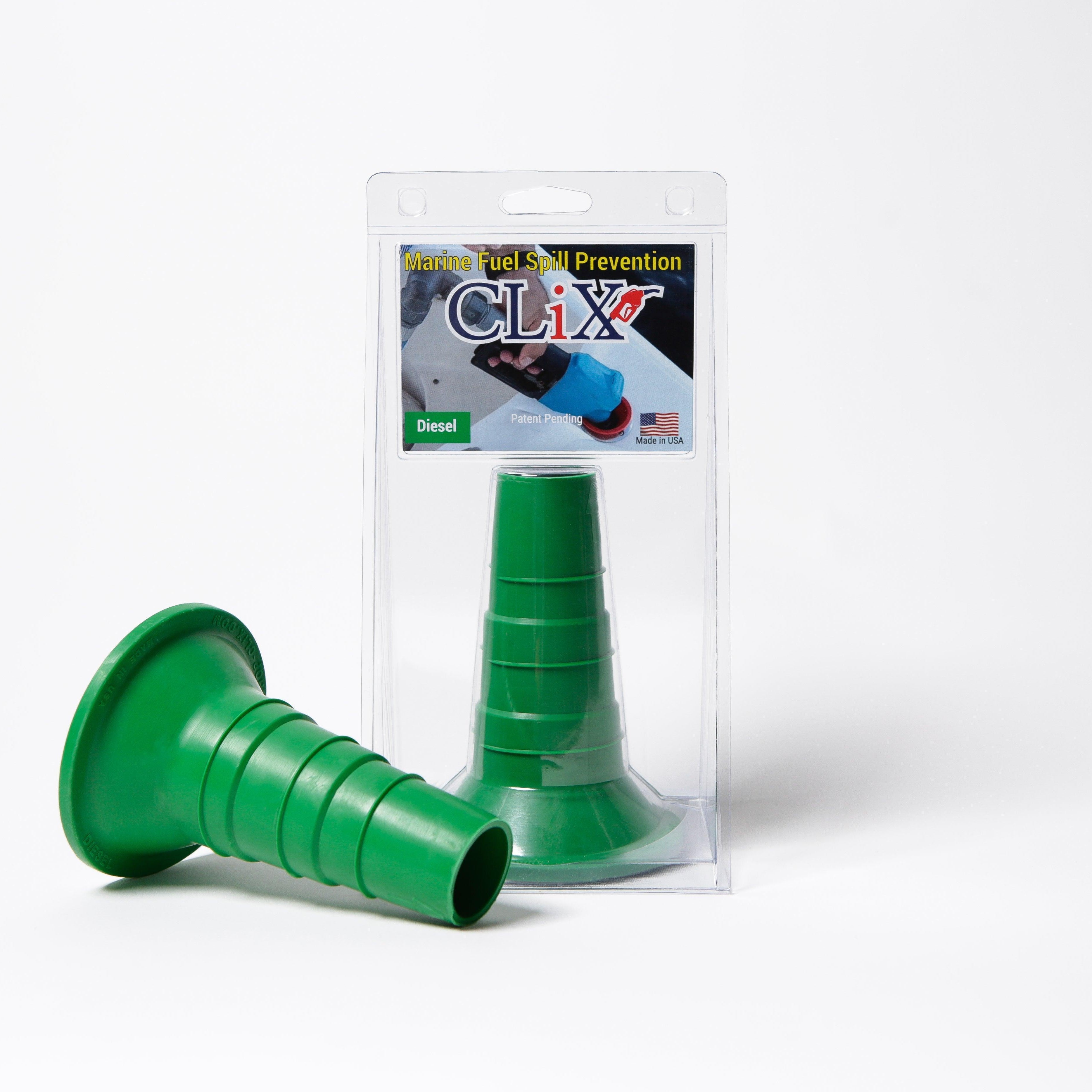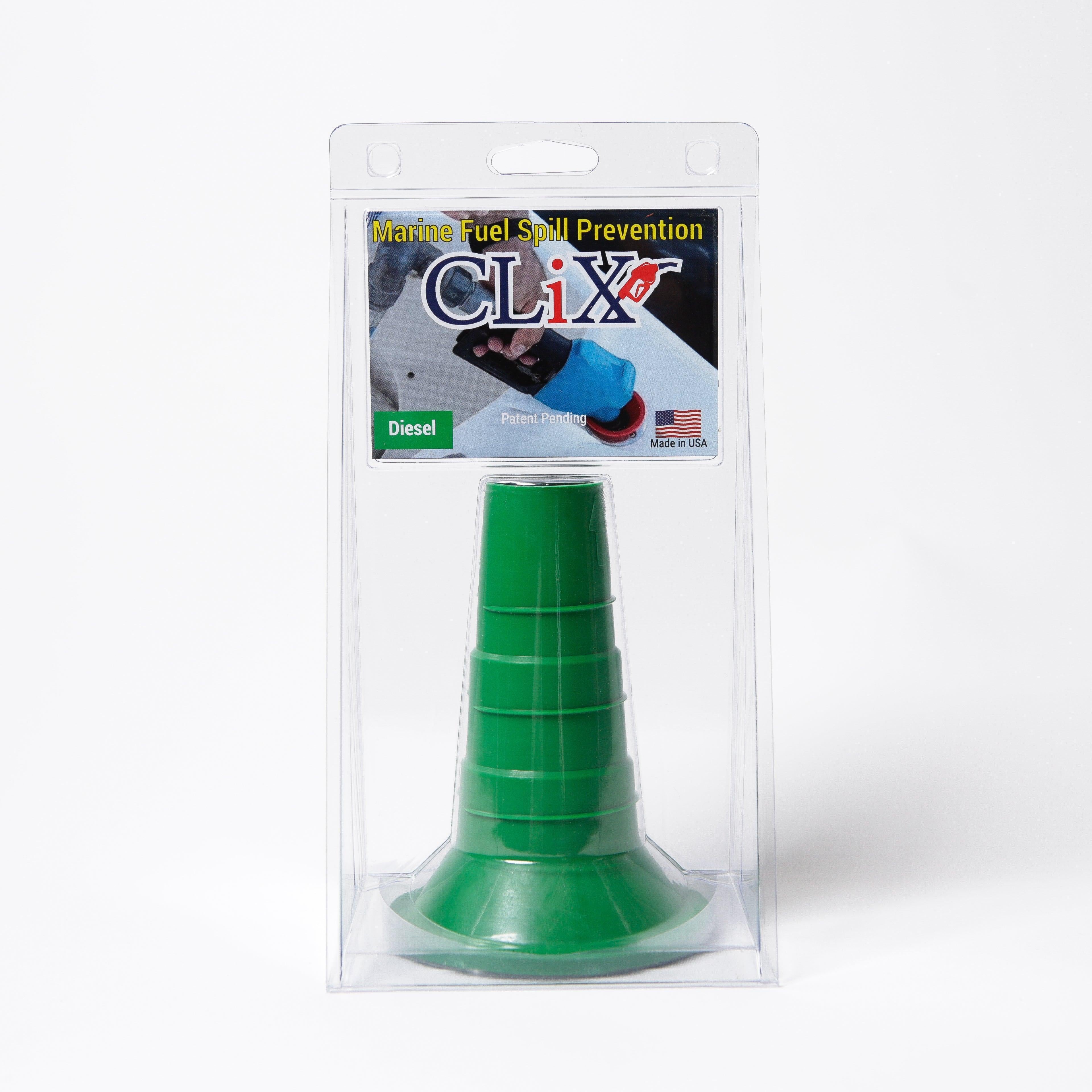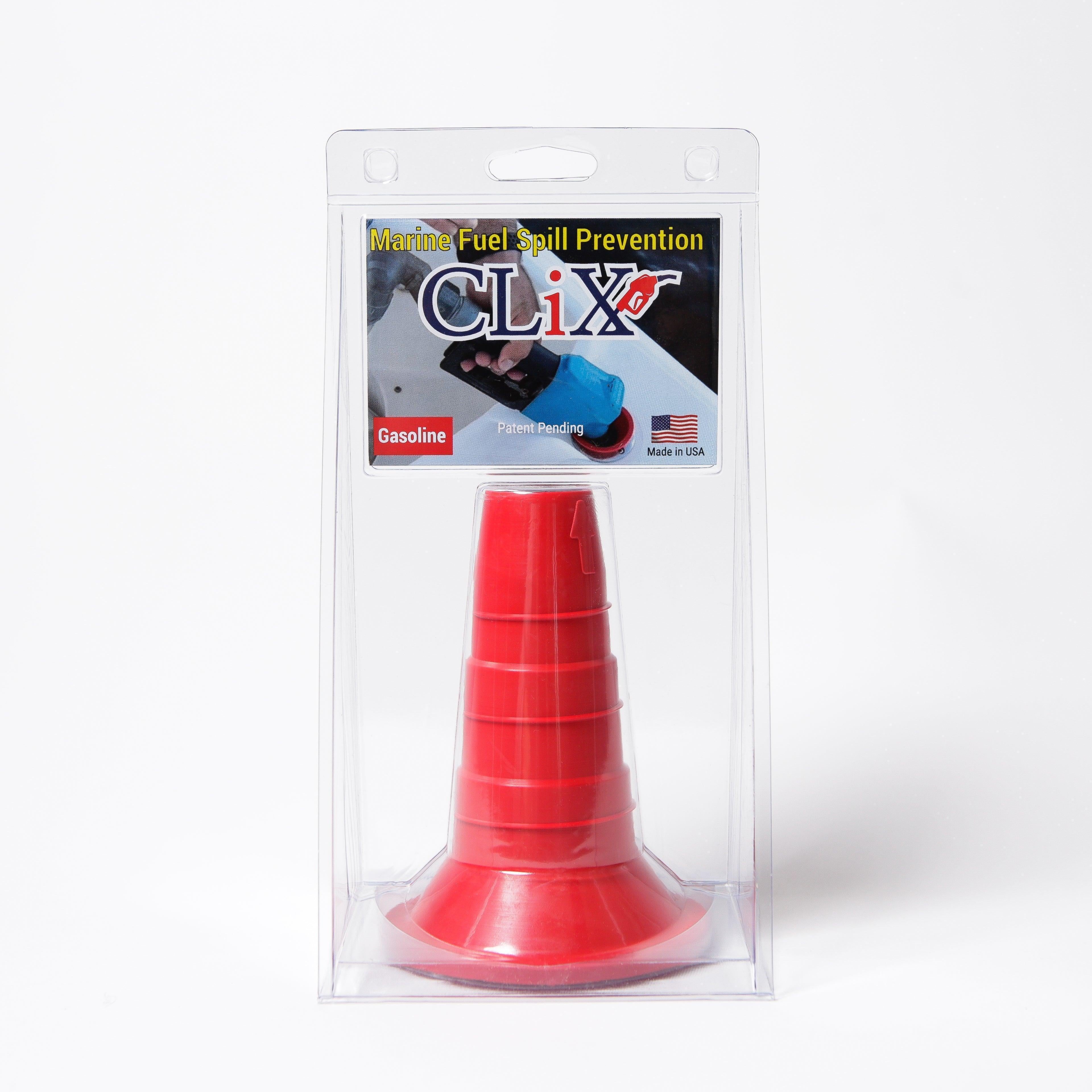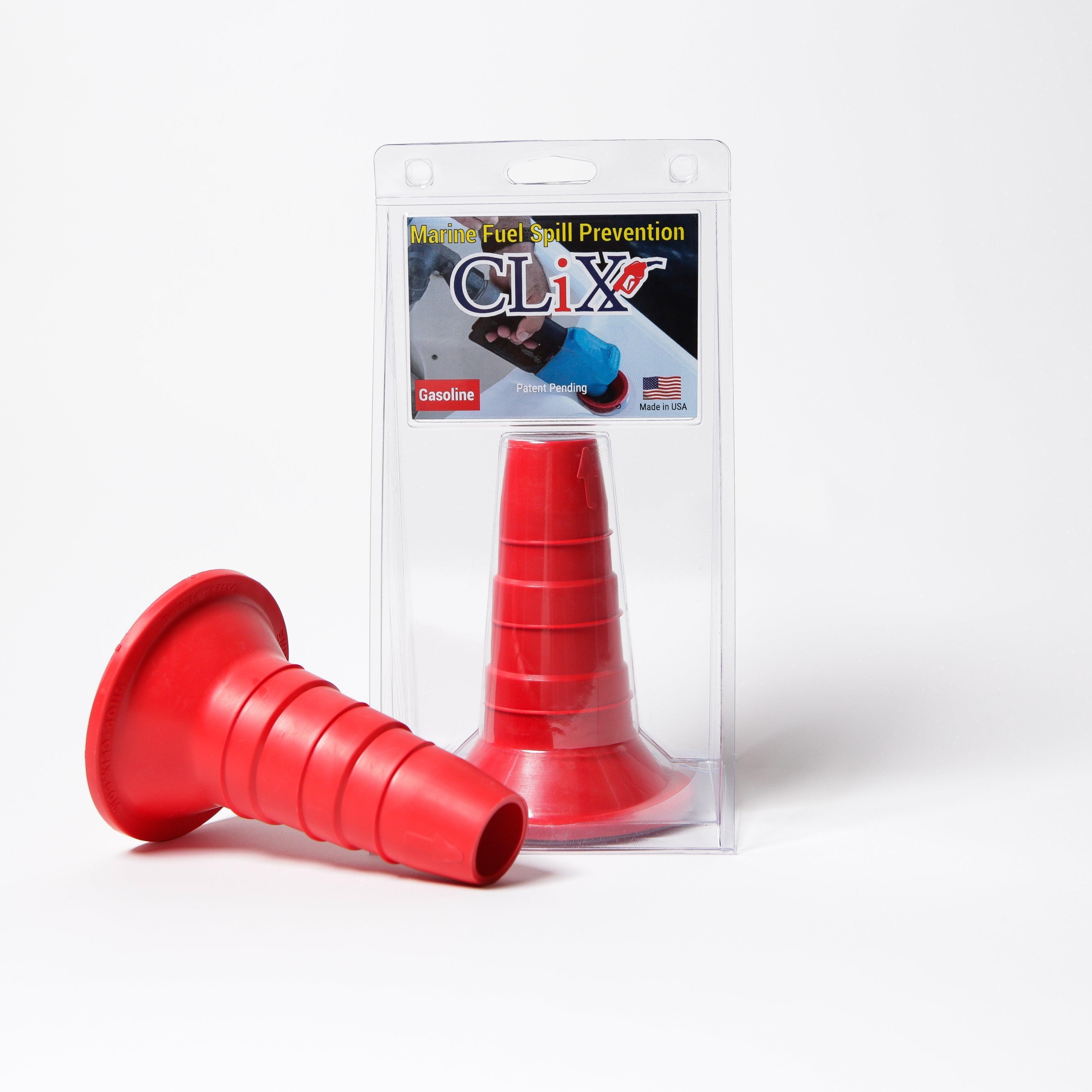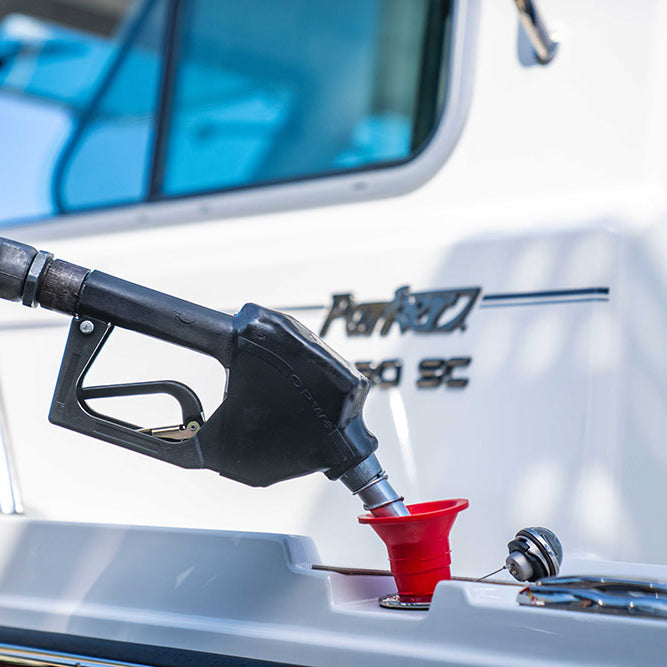When you're storing gasoline for the long haul, we're talking months or even years, you need a specialized long term gasoline storage container. This isn't your average red plastic can from the hardware store. These containers are built from the ground up to keep fuel from going bad.
They use specific materials, airtight seals, and rugged construction to fight off the triple threat of oxidation, evaporation, and contamination.
Why Your Gas Can Is More Important Than You Think
Picture this: a wicked storm rolls through and knocks out the power for the foreseeable future. No problem, you think. You've got a generator. You grab that gas can you filled up last season, pour it in, and give the cord a yank. Nothing. The engine sputters and dies.
Your fuel has gone stale, leaving you in the dark exactly when you needed that power most. This is more than just a hassle; in a real emergency, it's a critical failure.
This is exactly why picking the right long term gasoline storage container is non-negotiable. Gasoline is a surprisingly fragile cocktail of chemicals that starts breaking down much faster than people realize. Standard pump gas can start to lose its punch in as little as three to six months.
What Makes Good Fuel Go Bad?
Gasoline has three main enemies when it's sitting in storage: oxidation, evaporation, and water.
- Oxidation: Air is the big one. Oxygen reacts with the fuel, creating sticky, varnish-like gunk. This stuff is a killer for engines, clogging up fuel lines and carburetors until nothing works.
- Evaporation: The lightest, most combustible parts of gasoline are the first to disappear into thin air. These are the components that give an engine its starting power, especially when it's cold. Once they're gone, the fuel just doesn't have the same oomph.
- Water Contamination: If your container isn't sealed tight, it will literally breathe in moisture from the air. Water is heavier than gas, so it sinks to the bottom of the can, causes rust, and eventually gets sucked into your engine. That’s a recipe for disaster.
A proper storage container is designed to be a fortress, protecting your fuel from these natural enemies. It’s not just holding a liquid; it’s preserving the chemical balance that makes the fuel work.
Choosing the right container is the first and most critical step in any fuel storage plan. It’s the difference between having a reliable energy source and a useless, hazardous liquid.
It’s no surprise that people are taking fuel storage more seriously. The global market for fuel storage tanks is expected to jump from USD 16 billion in 2025 to USD 24.2 billion by 2035, a clear sign that safe, effective storage is on everyone's mind. You can read more about these fuel storage market trends from Future Market Insights.
So don't treat your container as an afterthought. It's a crucial piece of gear that safeguards your investment in both the fuel and the equipment that runs on it.
Plastic vs. Metal: Which Container Is Right for You?
Picking the right material for your long term gasoline storage container is probably the single biggest decision you’ll make. It’s a choice that directly affects how long your fuel lasts, how safe your setup is, and how much you spend. We're not just talking about what holds the gas, but what truly preserves it.
Think of it this way: a top-tier plastic container is like a modern, weatherproof jacket—it's lightweight, highly effective, and perfect for most situations. A metal container, on the other hand, is like a fortified bunker—built from the ground up to withstand the absolute worst without a single compromise.
Let's dig into which one makes the most sense for you.
The Case for Plastic Containers
Modern plastic fuel cans aren't the flimsy jugs you might remember. The good ones are made from high-density polyethylene (HDPE), a seriously tough material that brings a few key advantages to the table. For a lot of people, these perks make HDPE the obvious choice.
Right off the bat, HDPE containers are much lighter than metal ones, which makes a huge difference when you're lugging around a 5-gallon can. They’re also completely immune to rust, which is a major enemy that can contaminate your fuel. On top of that, plastic cans are usually more affordable, making them a great starting point for anyone building an emergency stockpile on a budget.
But they do have a few downsides. Plastic is more permeable than metal, which means a tiny, almost immeasurable amount of gasoline vapor can escape over time. They also tend to swell and shrink with big temperature swings, and too much direct sunlight can make the plastic brittle over the years.
This decision tree gives you a quick visual on the thought process for picking the right container.
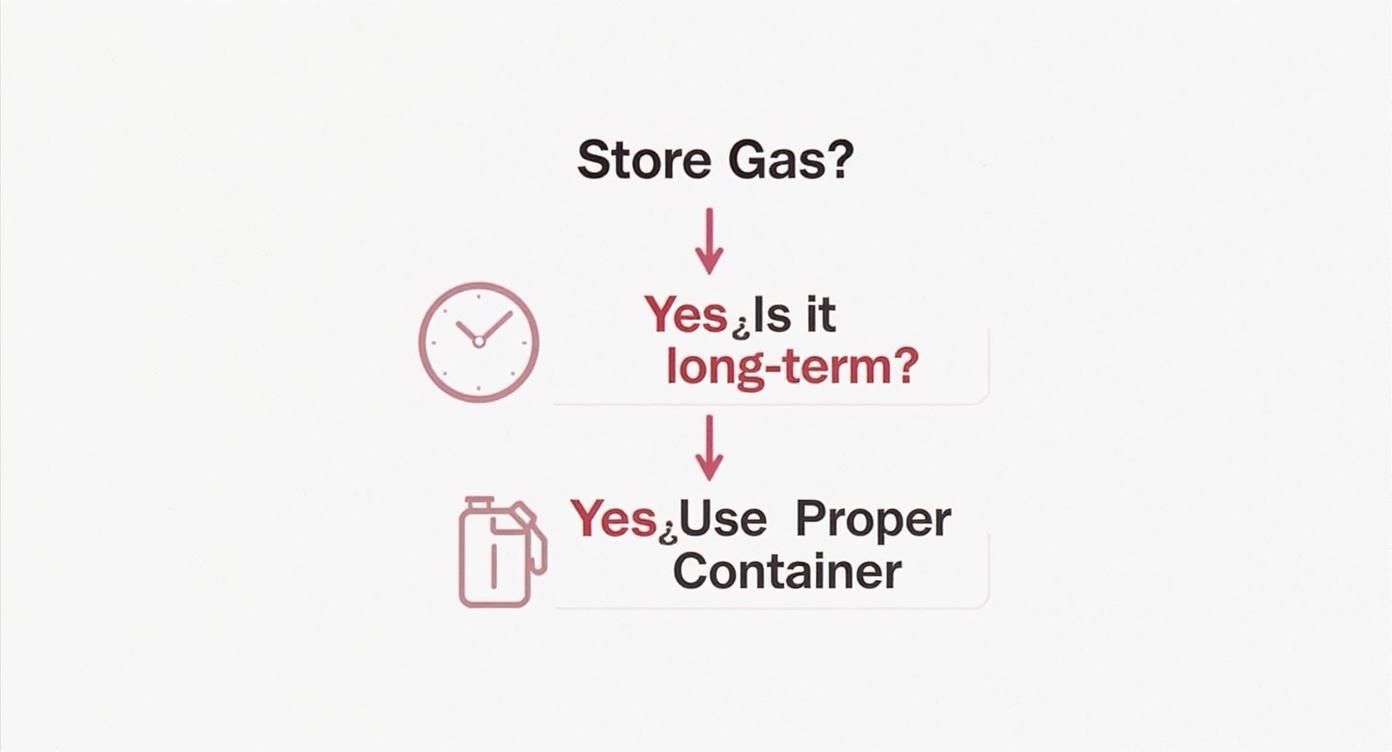
As you can see, the moment you decide to store fuel long-term, you immediately need a specialized container. That makes the material you choose the critical next step.
The Unmatched Durability of Metal Containers
When you need absolute reliability and maximum safety, metal containers are the undisputed champs. These are typically made from powder-coated steel and are considered the gold standard for anyone serious about long-term storage.
Their biggest plus is that they are completely impermeable. A properly sealed metal can creates a truly airtight fortress, stopping fuel vapors from getting out and preventing air and moisture from getting in. This is your best defense against oxidation and evaporation, the two things that ruin gasoline. Metal is also far more fire-resistant—a vital safety feature.
Of course, they aren't perfect. Metal cans are heavier and cost more upfront. Their main weakness is the potential for rust. While quality cans have protective interior linings, a deep scratch or a bad dent can expose the raw metal to moisture, leading to corrosion. This means you’ll want to inspect them regularly.
The challenge of creating a perfectly sealed, durable container is a massive engineering feat. Just look at the global scale: in 2024, the worldwide storage capacity for liquefied petroleum gas (LPG)—a fuel with similar storage needs—was around 709 million barrels. This staggering number shows how critical it is to have robust containers that prevent leaks and keep fuel stable, a principle that applies directly to the long term gasoline storage container in your garage.
Gasoline Container Material Comparison
Choosing between plastic, steel, and even aluminum can be tough. Each material has its own set of pros and cons depending on your specific needs, from budget to storage duration.
This table breaks down the key differences to help you see which one aligns with your goals.
| Feature | HDPE Plastic Containers | Steel Containers | Aluminum Containers |
|---|---|---|---|
| Durability | Good, but can become brittle with UV exposure over time. | Excellent, highly puncture-resistant and rigid. | Very good, strong but lighter than steel. |
| Weight | Lightweight and easy to handle. | Heavy, especially when full. | Lighter than steel, but heavier than plastic. |
| Corrosion | Immune to rust. | Prone to rust if coating is damaged. | Highly resistant to corrosion, ideal for marine use. |
| Vapor Permeation | Allows for minimal vapor permeation. | Impermeable, creating a true airtight seal. | Impermeable, providing an excellent seal. |
| Cost | Most affordable option. | Higher upfront cost, but a long-term investment. | Generally the most expensive option. |
| Best For | Short-term storage (1-2 years), portability, budget. | True long-term storage (3+ years), maximum safety. | Marine environments, racing, specialty applications. |
Ultimately, this comparison highlights the trade-offs. Plastic offers incredible value and convenience, while steel provides unparalleled security for your fuel investment. Aluminum sits as a premium, rust-proof alternative.
So, Which One Should You Choose?
In the end, it really boils down to your specific plans.
-
For affordability and portability: If you plan on rotating your fuel every year or so and need something lightweight and easy to manage, a high-quality HDPE plastic can is a fantastic, practical choice. It's also a great pick for boating, where saltwater corrosion is a huge concern for steel. For more on this, check out our guide on portable gas containers for boats.
-
For ultimate longevity and safety: If you're building a multi-year emergency fuel supply and want the toughest, most fire-resistant, and vapor-proof option you can get, a steel container is the way to go. It’s an investment, but it delivers the best possible protection for your fuel and gives you total peace of mind.
Key Features That Keep Your Fuel Safe and Usable
Not every gas can is built for the long haul. When you're talking about storing fuel for months or even years, you need more than just a bucket that doesn't leak. A true long term gasoline storage container is an active system, engineered with specific features to preserve and protect your fuel.
Let's break down what separates a high-quality can from a cheap one. Knowing these features is the key to spotting a container that will actually do its job safely and effectively.
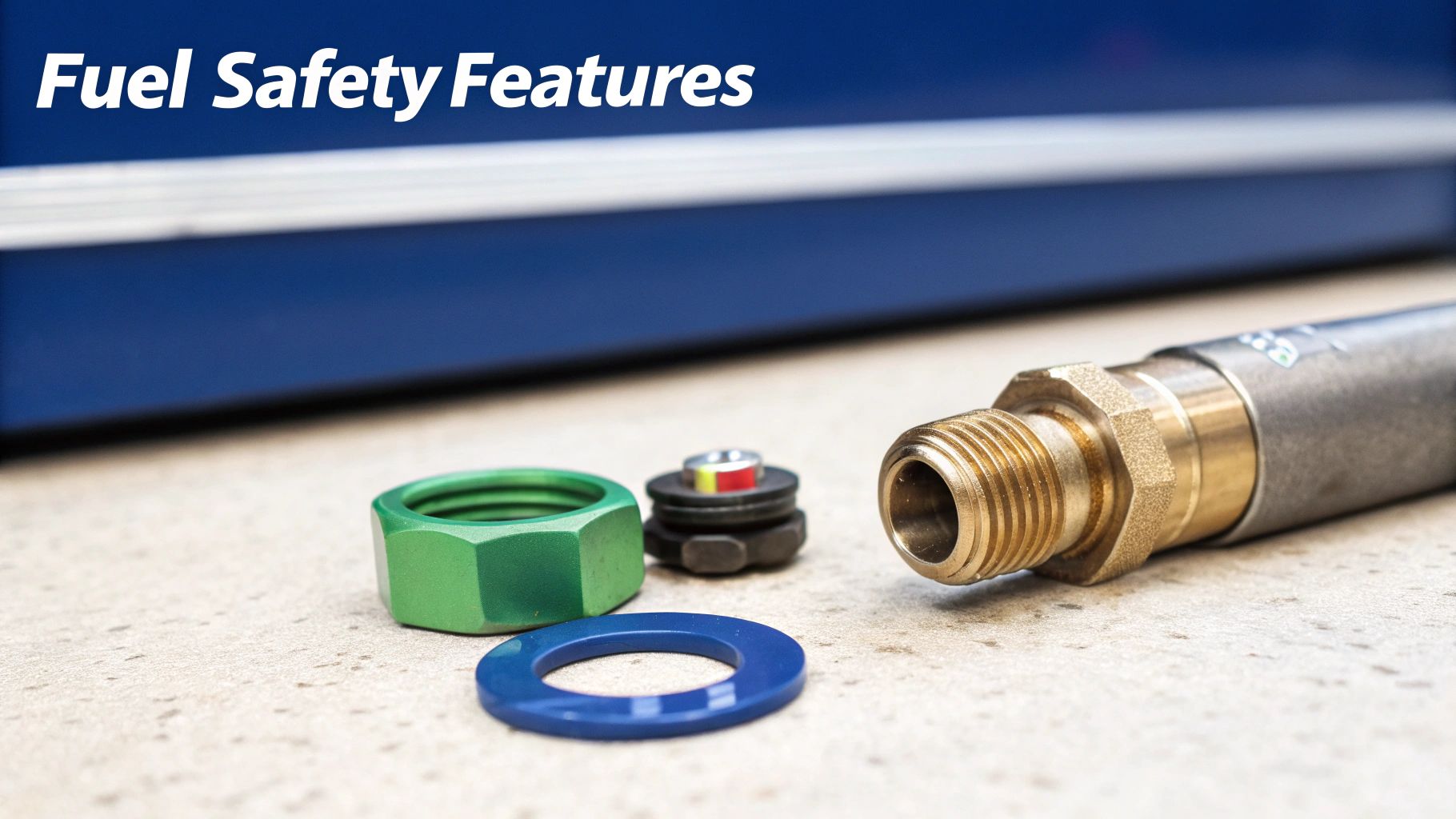
Think of it less like a plastic jug and more like a miniature fuel vault. Its primary mission is to create a completely stable environment, shielding the volatile chemicals in gasoline from temperature swings, air, and moisture. And that mission starts with the most critical part of the design: the seal.
Vapor-Proof Seals and High-Grade Gaskets
The single most important feature is an airtight seal. No exceptions. Gasoline is constantly trying to evaporate, and the most combustible parts—the very components that make your engine run—are the first to escape as vapor. A cheap, leaky cap lets all that good stuff bleed away, leaving you with stale, less potent fuel.
This is where quality gaskets and seals make all the difference.
- Gasket Material: Forget standard rubber O-rings; they'll crack and fail in no time. You need a gasket made from Viton or a similar chemical-resistant polymer designed to stand up to gasoline for years without getting brittle.
- Locking Mechanism: A good cap doesn't just twist on. It should have a robust locking system, like a cam-lock lever or a screw-down design that applies firm, even pressure. This is what fully compresses the gasket, creating an impenetrable barrier.
A solid seal isn't just about keeping the fuel fresh; it's a huge safety feature. It stops flammable vapors from building up in your garage or shed, which drastically cuts down your fire risk.
A container's ability to hold a perfect seal is the cornerstone of effective long-term storage. It's the difference between preserving fuel and just holding it as it slowly degrades.
Smart Spout Designs for Easy and Clean Use
The spout is where things can go right or horribly wrong. A poorly designed spout turns a simple task like refueling a generator into a frustrating, hazardous mess.
Many of us remember the old, simple spouts that poured fast but spilled easily. Modern safety regulations have pushed manufacturers to innovate, and while some new designs can be clunky, the best ones are a huge improvement. Many cans now use spring-loaded nozzles that only open when you press them against the gas tank. Pull away, and they automatically shut off. No spills, no fumes.
You'll also find self-venting spouts that have a small secondary tube. This lets air flow into the can as the fuel flows out, stopping that frustrating "glug-glug" that causes splashing. It might pour a little slower, but the smooth, controlled flow is a worthwhile trade-off for safety and a clean workspace.
Venting Systems and Flame Arrestors
A sealed container has to deal with pressure. As temperatures rise and fall, the fuel inside expands and contracts, building up or reducing pressure inside the can. A quality container needs a way to manage this.
The best metal cans often handle this with a separate, sealed vent screw. You crack it open just before you pour to let air in for a smooth flow, then you seal it up tight again for storage. It's a simple, manual system, but it’s incredibly effective at maintaining a perfect seal when it matters most.
Finally, there’s a critical safety feature that often goes unnoticed: the flame arrestor. This is a small mesh screen, usually sitting right inside the opening of the can. Its job is to stop an external spark or flame from igniting the vapors inside the container. It’s your last line of defense against a potential explosion, and it's an absolute must-have.
Safe Storage Locations and Handling Practices
Picking the right long term gasoline storage container is a great start, but it's only half the battle. Where and how you store that container is just as important for keeping everyone safe. Storing gasoline isn't like shoving old paint cans in a corner; you're dealing with a highly flammable and volatile substance that demands a healthy dose of respect and a solid plan.

Before you even think about location, make sure your container is up to snuff. Never buy one that isn't clearly stamped with certifications from groups like the Department of Transportation (DOT) or Underwriters Laboratories (UL). Those labels aren't just for decoration; they're your assurance that the container has been put through the wringer and passed tough tests for durability and leak prevention.
Choosing the Ideal Storage Location
Where you decide to keep your fuel can mean the difference between a safe emergency backup and a serious hazard. The absolute best spot has one non-negotiable trait: it’s completely detached from your home.
A detached, well-ventilated shed or a dedicated outdoor storage locker is the gold standard. This separation is vital because gasoline fumes are heavier than air and can seep into your living space, creating a dangerous situation. Even with a perfect seal on your container, keeping it isolated is just smart practice.
On the flip side, some places are flat-out dangerous and should be avoided at all costs:
- Attached Garages: They might seem convenient, but garages are often home to ignition sources like water heaters, furnaces, and electrical outlets. A tiny vapor leak is all it would take to find one of those sparks, leading to disaster.
- Basements or Utility Rooms: These spots almost never have enough ventilation. Fumes can easily build up, creating a massive fire and health risk. The bottom line is simple: never store gasoline inside any part of your house.
The core principle of safe gasoline storage is easy to remember: keep it cool, keep it dark, and keep it far away from your family and anything that could spark a fire.
A Practical Safety Checklist
Once you’ve found a good detached location, run through this checklist to make sure your setup is as secure as it can be. Each of these steps is designed to tackle a specific risk that comes with storing fuel long-term. For a deeper dive, check out our guide on how to store gasoline safely.
-
Keep the Temperature Stable: Find a spot that's shielded from extreme heat and direct sunlight. A cool, dark place prevents pressure from building up inside the can and slows down how quickly the fuel breaks down. The sweet spot is a temperature range between 50°F and 70°F (10°C to 21°C).
-
Eliminate All Ignition Sources: Clear the storage area of anything that could create a spark. We’re talking power tools, lawnmowers, battery chargers, and even basic light switches that aren't explosion-proof. A good rule of thumb is to keep your fuel at least 50 feet away from any pilot light or open flame.
-
Make Sure It's Well-Ventilated: Your shed or storage unit needs good airflow to carry away any potential fumes. Vents near both the floor and the ceiling will help ensure that heavier-than-air vapors don't settle and build up.
-
Ground Your Metal Cans: When you're pouring from a metal container, static electricity can build up and create a dangerous spark. The fix is simple: always place the metal can on the ground before you start filling it. This grounds the container and safely gets rid of any static charge. For more complex needs, businesses often turn to specialized chemical storage solutions for comprehensive guidance.
Following these simple rules for handling and storage will turn your fuel reserve from a potential liability into a reliable asset you can count on when you need it most.
How to Keep Stored Gasoline Fresh for Years
https://www.youtube.com/embed/TD8URNG2rC8
Picking the right long term gasoline storage container is the perfect start, but it’s only half the battle. Now you have to keep the fuel inside from going bad. Gasoline is a lot more fragile than most people think and starts breaking down surprisingly fast, which is the last thing you want when you need to power a generator or get your boat on the water.
Think of it like a soda. As long as the cap is on tight, it stays fizzy and potent. The moment you open it, air gets in and it starts to go flat. Gasoline acts in a very similar way, losing its most powerful components as it gets exposed to the elements.
The Role of Fuel Stabilizers
The secret to keeping your fuel fresh for the long haul is a good fuel stabilizer. This isn't some magic potion—it's a chemical additive specifically engineered to slow down the natural aging process of gasoline.
A quality stabilizer tackles two big problems:
- It stops oxidation. Stabilizers are packed with antioxidants that prevent oxygen from reacting with the fuel. This is what stops that sticky varnish and gum from forming, which can clog up an engine in no time.
- It handles moisture. Many stabilizers also contain agents that absorb stray water molecules, keeping them from settling at the bottom of the tank where they can cause rust and serious engine trouble.
For any gas you plan on storing for more than a few months, adding a stabilizer is a must. It can easily extend the life of your gasoline from a mere 3-6 months to over a year, and sometimes even longer. This is especially critical for boats, where fuel often sits unused for an entire season. You can dive deeper into this topic in our guide on the best fuel additives for boats.
The Right Way to Treat and Store Your Fuel
Just tossing some stabilizer into a can of gas isn't quite enough. How you prep the fuel for storage makes a massive difference in how long it will last.
The best method is to add the stabilizer to an almost empty container before you fill it up. When you pour the fresh gasoline in, it will mix the additive thoroughly and evenly from the start.
Next, fill your container up to about 95% capacity. This is the gold standard. A nearly-full can minimizes the amount of air trapped inside, which is the main culprit behind oxidation and vapor loss. That little bit of extra space, however—that last 5%—is absolutely vital. It gives the fuel room to expand and contract with temperature changes, preventing a dangerous buildup of pressure.
The less air you have in your container, the longer your fuel will last. Filling it to 95% is the professional standard for balancing fuel preservation with safety.
Implement a First-In First-Out System
Even with a stabilizer, gasoline has a shelf life. That’s why the smartest approach is to treat your stored fuel as a rotating stock, not a "set it and forget it" emergency supply. The pros call this a "first-in, first-out" (FIFO) system.
It's really straightforward to implement:
- Label Everything: The moment you fill and treat a container, grab a permanent marker and write the date on it.
- Use the Oldest First: When you need gas, always reach for the container with the oldest date.
- Replenish and Rotate: After you use that fuel, refill the can with fresh, stabilized gasoline and move it to the back of your storage lineup.
This simple cycle ensures you're always using and replacing your oldest fuel, so you never end up with a can that’s several years old and potentially unreliable when you need it most.
Your Roadmap to Reliable Fuel Storage
So, we've covered a lot of ground on keeping gasoline safe and stable for the long haul. The big takeaway? It's not about one magic trick. It's about building a solid system where every piece, from the can itself to where you store it, works together.
Think of it as a chain—every link has to be strong for the whole thing to work when you need it.
The whole process really boils down to a few key principles. It all starts with picking the right long term gasoline storage container. You have to decide what works best for you, whether that's a tough-as-nails steel can or a more manageable plastic one. This choice is the cornerstone of your entire fuel storage plan.
From there, you absolutely cannot skimp on safety. Features like vapor-proof seals and flame arrestors aren't just fancy add-ons; they're your first and best line of defense against a really bad day.
Putting It All Together
Where you store the fuel is just as important as what you store it in. Following the rules for a safe location isn't optional. That recommendation for a cool, detached, and well-ventilated shed? That's a critical safety barrier, putting a potential hazard far away from your living space. And it goes without saying: keep those cans far, far away from anything that could spark a fire.
Finally, the best container in the world won't help if the gas inside has gone bad. That's why you should always treat fresh gasoline with a quality fuel stabilizer right away. It's a simple, quick step that can be the difference between fuel that lasts a few months and fuel that's good to go for a year or even longer.
True preparedness isn't about just buying a container; it's about building a reliable fuel system you can trust. The goal is confidence—knowing your fuel will be safe, stable, and ready when you need it most.
By focusing on these fundamentals—the right can, the essential safety gear, a smart location, and proper fuel treatment—you're not just storing gas. You're building a system that gives you real peace of mind. Now you have the knowledge to put together a setup that you can count on.
Frequently Asked Questions
When it comes to storing fuel, a lot of questions can pop up. Getting the right answers is key to making sure your setup is safe and reliable. Here are a few of the most common things people ask about long term gasoline storage containers, answered in plain English to help you manage your fuel with confidence.
How Long Can Gasoline Be Stored with a Stabilizer?
This is the big one, and the short answer is: it depends. When you use a good fuel stabilizer and store your gas in a properly sealed container, you can reasonably expect it to last anywhere from one to three years. The exact shelf life comes down to a few critical things.
- What kind of fuel are you using? If you can get your hands on ethanol-free gasoline, use it. Ethanol is a magnet for water, and water is the enemy of stored fuel. Pure gas will always outlast blends.
- Is your stabilizer any good? All stabilizers are not created equal. A high-quality product from a trusted brand will do a much better job fighting off oxidation. Just be sure to follow the mixing directions on the bottle perfectly.
- Where are you keeping it? The best spot is cool, dark, and has a steady temperature. A sealed metal can is your best bet for preventing vapor leaks and keeping contaminants out, which really helps push that expiration date out further.
Is It Safe to Store Multiple Gas Cans Together?
Yes, you can absolutely store multiple gas cans together, as long as you do it the right way. The goal is to set up your storage area to minimize any and all risks. First rule: never store gasoline in a basement or an attached garage. Fumes are heavier than air and can easily find their way into your living space and near ignition sources.
A detached shed or a well-ventilated outbuilding is the ideal place. Make sure you leave enough room between each long term gasoline storage container for air to circulate freely. This helps any stray vapors dissipate and makes it much easier to grab and inspect each can.
The most important rule of all: keep your fuel far, far away from anything that could create a spark. We're talking water heaters, furnaces, welders, grinders—even a lawnmower that could hold a static charge.
One last thing—always check your local fire codes. Many towns have specific rules about how much fuel you can legally keep on your property. Staying compliant isn't just about following rules; it's a huge part of being a responsible and safe fuel owner.
What Are the Signs of Bad Gasoline?
Learning to spot bad gas is a skill that can save you from some seriously expensive engine repairs. Old, degraded fuel has a few dead giveaways, and you can usually identify them with a quick look and a sniff.
The smell is the most obvious clue. Fresh gasoline has that sharp, distinct chemical scent we all know. Bad gas smells... different. It often takes on a sour or varnish-like odor. If it doesn't smell right, it isn't right.
You can also spot it with your eyes:
- Darker Color: Old fuel tends to look much darker and murkier than fresh, clear gas.
- Gunk at the Bottom: Look for little particles or a gummy film settled at the bottom of the can.
- Water Separation: If the gas has been contaminated with water, you might see it as a separate layer at the very bottom of the container.
Not sure? Pour a little bit into a clean glass jar and give it a look. If you see any of the signs above, the fuel is toast. Don't even think about putting it in an engine—it will clog fuel lines and gum up carburetors. It’s just not worth the risk. Find your local hazardous waste facility and dispose of it properly.
At CLiX Fueling Solutions, we know how important safe and easy fueling is, especially around the water. Our spill-free system is built to give you total peace of mind at the pump, keeping your boat and the environment protected. See how to make fueling simpler by visiting https://clixfueling.com.

